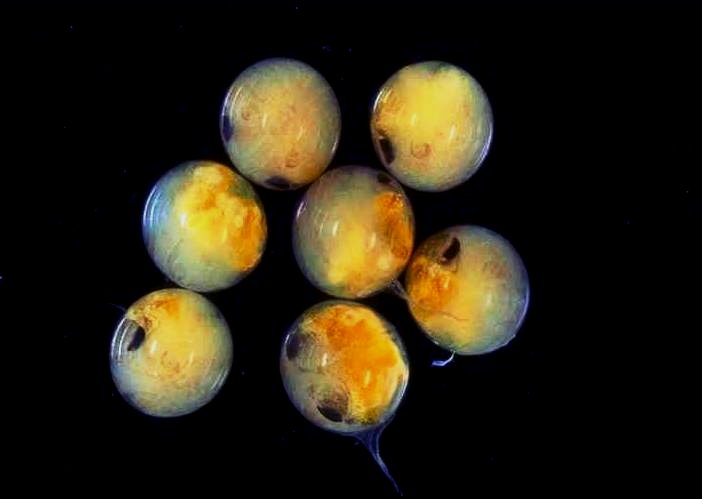|
Potamoidea
Potamoidea is a superfamily of freshwater crab Around 1,300 species of freshwater crabs are distributed throughout the tropics and subtropics, divided among eight family (biology), families. They show direct development and maternal care of a small number of offspring, in contrast to marine c ...s, comprising the two families Potamidae and Potamonautidae. Two previously recognised families, Deckeniidae and Platythelphusidae, are now treated as parts of the family Potamonautidae. References Crabs Arthropod superfamilies {{Potamoidea-stub ... [...More Info...] [...Related Items...] OR: [Wikipedia] [Google] [Baidu] |
Crabs
Crabs are decapod crustaceans of the infraorder Brachyura (meaning "short tailed" in Greek), which typically have a very short projecting tail-like abdomen, usually hidden entirely under the thorax. Their exoskeleton is often thickened and hard. They generally have five pairs of legs, and they have "pincers" or "claws" on the ends of the frontmost pair, scientifically termed the '' chelae''. They are present in all the world's oceans, in freshwater, and on land, often hiding themselves in small crevices or burrowing into sediment. Crabs are omnivores, feeding on a variety of food, including a significant proportion of algae, as well as detritus and other invertebrates. Crabs are widely consumed by humans as food, with over 1.5 million tonnes caught annually. True crabs first appeared in the fossil record during the Jurassic period, around 200 million years ago, achieving great diversity by the Cretaceous period; around 7,000 extant species in 96 families are known. A numb ... [...More Info...] [...Related Items...] OR: [Wikipedia] [Google] [Baidu] |
Potamidae
Potamidae is a family of freshwater crabs. It includes more than 650 species and nearly 100 genera, which are placed into two subfamilies: Potaminae and Potamiscinae. Subfamily Potaminae The Potaminae Ortmann, 1896 are distributed around the Mediterranean Sea, on Socotra and eastwards to Northern India. *'' Acanthopotamon'' Kemp, 1918 *'' Alcomon'' Yeo & Ng, 2007 *'' Himalayapotamon'' Pretzmann, 1966 *'' Lobothelphusa'' Bouvier, 1917 *'' Paratelphusula'' Alcock, 1909 *'' Potamon'' Savigny, 1816 *''Socotra'' Cumberlidge & Wranik, 2002 *'' Socotrapotamon'' Apel & Brandis, 2000 Subfamily Potamiscinae The Potamiscinae Bott, 1970 are found in East Asia and Southeast Asia Southeast Asia is the geographical United Nations geoscheme for Asia#South-eastern Asia, southeastern region of Asia, consisting of the regions that are situated south of China, east of the Indian subcontinent, and northwest of the Mainland Au .... *'' Acartiapotamon'' Dai, 1999 *'' Allopotamon'' Ng, 1988 *''A ... [...More Info...] [...Related Items...] OR: [Wikipedia] [Google] [Baidu] |
Potamonautidae
Potamonautidae is a family of freshwater crabs endemic to Africa, including the islands of Madagascar, the Seychelles, Zanzibar, Mafia, Pemba, Bioko, São Tomé, Príncipe and Sherbro Island. Fossil remains dating from the Late Miocene The Late Miocene (also known as Upper Miocene) is a sub-epoch of the Miocene epoch (geology), Epoch made up of two faunal stage, stages. The Tortonian and Messinian stages comprise the Late Miocene sub-epoch, which lasted from 11.63 Ma (million ye ... period have been attributed to the family Potamonautidae. It comprises the following subfamilies and genera: Liberonautinae Potamonautinae, References Potamoidea Freshwater crustaceans of Africa Decapod families {{Potamoidea-stub ... [...More Info...] [...Related Items...] OR: [Wikipedia] [Google] [Baidu] |
Potamon Fluviatile
''Potamon fluviatile'' is a freshwater crab found in or near wooded streams, rivers and lakes in Southern Europe. It is an omnivore with broad ecological tolerances, and adults typically reach in size during their 10–12 year lifespan. They inhabit burrows and are aggressive, apparently outcompeting native crayfish. ''P. fluviatile'' has been harvested for food since classical antiquity, and is now threatened by overexploitation. Many of the island populations are particularly vulnerable, and the Maltese subspecies has become a conservation icon. A population in Rome may have been brought there before the founding of the Roman Empire. Description Adult ''Potamon fluviatile'' may reach a carapace length of , with females being generally smaller than males. As with other crabs, the body is roughly square, with the reduced abdomen tucked beneath the thorax. The thorax bears five pairs of legs, the first of which is armed with large claws. The life span of ''P. f ... [...More Info...] [...Related Items...] OR: [Wikipedia] [Google] [Baidu] |
Freshwater Crab
Around 1,300 species of freshwater crabs are distributed throughout the tropics and subtropics, divided among eight family (biology), families. They show direct development and maternal care of a small number of offspring, in contrast to marine crabs, which release thousands of planktonic crustacean larvae, larvae. This limits the dispersal abilities of freshwater crabs, so they tend to be endemism, endemic to small areas. As a result, a large proportion are endangered species, threatened with extinction. Systematics More than 1,300 species description, described species of freshwater crabs are known, out of a total of 6,700 species of crabs across all environments. The total number of species of freshwater crabs, including undescribed species, is thought to be up to 65% higher, potentially up to 2,155 species, although most of the additional species are currently unknown to science. They belong to eight families, each with a limited distribution, although various crabs from other ... [...More Info...] [...Related Items...] OR: [Wikipedia] [Google] [Baidu] |
Arnold Edward Ortmann
Arnold Edward Ortmann (April 8, 1863 – January 3, 1927) was a Prussian-born United States naturalist and zoologist who specialized in malacology. Biography Ortmann was born in Magdeburg, Prussia on April 8, 1863. A student of Ernst Haeckel, he graduated from the University of Jena in 1885 with a Ph.D.; he had also studied at the University of Kiel and the University of Strasbourg. From 1886 on, he worked as an instructor at the University of Strasbourg. Together with Haeckel, he participated in an expedition to Zanzibar in 1890/91. Three years later, he emigrated to the United States, where he got a post as the curator of the department of invertebrate paleontology at Princeton University. He was elected to the American Philosophical Society in 1897. In 1899, he participated in the Peary Relief expedition, and one year later, he was naturalized as a U.S. citizen. In 1903, he moved to Pittsburgh. He became the curator of invertebrate zoology at the Carnegie Museum and from 191 ... [...More Info...] [...Related Items...] OR: [Wikipedia] [Google] [Baidu] |
Raffles Bulletin Of Zoology
''The Raffles Bulletin of Zoology'' is a peer-reviewed open-access scientific journal published by the Lee Kong Chian Natural History Museum at the National University of Singapore. Overview It covers the taxonomy, ecology, and conservation of Southeast Asian fauna Fauna (: faunae or faunas) is all of the animal life present in a particular region or time. The corresponding terms for plants and fungi are ''flora'' and '' funga'', respectively. Flora, fauna, funga and other forms of life are collectively .... Supplements are published as and when funding permits and may cover topics that extend beyond the normal scope of the journal depending on the targets of the funding agency. It was established as the ''Bulletin of the Raffles Museum'' in 1928 and renamed ''Bulletin of the National Museum of Singapore'' in 1961, before obtaining its current title in 1971. See also * List of zoology journals References Zoology journals Biannual journals Open access journals En ... [...More Info...] [...Related Items...] OR: [Wikipedia] [Google] [Baidu] |


